Search Engine Optimization (SEO) plays a crucial role in digital marketing by helping businesses improve their online visibility and reach their target audience. SEO involves optimizing a website's content, structure, and performance to rank higher in search engine results pages (SERPs). By improving their search engine rankings, businesses can attract more organic traffic to their website, increase brand awareness, and ultimately drive more conversions and sales.
One of the key benefits of SEO is that it allows businesses to connect with potential customers who are actively searching for products or services related to their industry. This targeted approach to marketing can result in higher quality leads and a better return on investment compared to traditional advertising methods. Additionally, SEO helps build trust and credibility with consumers, as websites that appear at the top of search results are often perceived as more authoritative and trustworthy. Overall, understanding the role of SEO in marketing is essential for businesses looking to establish a strong online presence and compete in today's digital landscape.
Search Engine Optimization (SEO) is a critical component of any successful digital marketing strategy. By optimizing a website's content, structure, and performance, businesses can improve their search engine rankings and attract more organic traffic. This targeted approach to marketing allows businesses to connect with potential customers who are actively searching for products or services related to their industry, resulting in higher quality leads and a better return on investment. Additionally, SEO helps build trust and credibility with consumers, as websites that appear at the top of search results are often perceived as more authoritative and trustworthy. Overall, understanding the role of SEO in marketing is essential for businesses looking to establish a strong online presence and compete in today's digital landscape.
Identifying Keywords and Target Audience
One of the first steps in creating an effective SEO strategy is identifying the keywords and phrases that potential customers are using to search for products or services related to your business. By conducting keyword research, businesses can gain valuable insights into the language and terms their target audience is using, allowing them to optimize their website's content accordingly. It's important to consider both the search volume and competition for each keyword, as well as the intent behind the search queries. By understanding the keywords and phrases that are most relevant to their target audience, businesses can create content that is more likely to rank well in search engine results pages (SERPs) and attract organic traffic.
In addition to identifying keywords, businesses must also understand their target audience's demographics, interests, and online behavior. By creating detailed buyer personas, businesses can tailor their SEO strategy to better meet the needs and preferences of their ideal customers. This may involve creating content that addresses specific pain points or interests, as well as optimizing for local search if the target audience is geographically specific. By understanding both the keywords and target audience, businesses can create a more effective SEO strategy that resonates with potential customers and drives meaningful results.
Identifying keywords and understanding the target audience are crucial steps in creating an effective SEO strategy. By conducting keyword research, businesses can gain valuable insights into the language and terms their target audience is using, allowing them to optimize their website's content accordingly. It's important to consider both the search volume and competition for each keyword, as well as the intent behind the search queries. In addition to identifying keywords, businesses must also understand their target audience's demographics, interests, and online behavior. By creating detailed buyer personas, businesses can tailor their SEO strategy to better meet the needs and preferences of their ideal customers. By understanding both the keywords and target audience, businesses can create a more effective SEO strategy that resonates with potential customers and drives meaningful results.
Creating SEO-Friendly Content
Once businesses have identified their target keywords and audience, the next step is to create high-quality, SEO-friendly content that addresses the needs and interests of potential customers. This may include blog posts, articles, product descriptions, videos, infographics, and other types of content that are optimized for relevant keywords and provide value to the target audience. It's important to create content that is original, informative, and engaging, as this can help improve search engine rankings and encourage visitors to spend more time on the website.
In addition to creating valuable content, businesses should also pay attention to on-page optimization factors such as title tags, meta descriptions, headers, and internal linking. These elements help search engines understand the context and relevance of the content on a website, which can improve its visibility in search results. Furthermore, businesses should ensure that their website is mobile-friendly, as mobile optimization is now a crucial ranking factor for search engines. By creating SEO-friendly content that is valuable to the target audience and optimized for relevant keywords, businesses can improve their online visibility and attract more organic traffic.
Creating high-quality, SEO-friendly content is essential for improving a website's search engine rankings and attracting organic traffic. This may include blog posts, articles, product descriptions, videos, infographics, and other types of content that are optimized for relevant keywords and provide value to the target audience. It's important to create content that is original, informative, and engaging, as this can help improve search engine rankings and encourage visitors to spend more time on the website. In addition to creating valuable content, businesses should also pay attention to on-page optimization factors such as title tags, meta descriptions, headers, and internal linking. These elements help search engines understand the context and relevance of the content on a website, which can improve its visibility in search results.
Leveraging Social Media for SEO
In addition to creating high-quality content on their website, businesses can also leverage social media platforms to improve their SEO performance. Social media signals such as likes, shares, comments, and followers can indirectly impact a website's search engine rankings by increasing its visibility and authority. By sharing valuable content on social media platforms, businesses can attract more traffic to their website and encourage engagement from their target audience. This can result in more backlinks from reputable websites, which are an important ranking factor for search engines.
Furthermore, social media platforms provide an opportunity for businesses to engage with their audience directly and build relationships with potential customers. By responding to comments, addressing concerns, and providing valuable information on social media, businesses can improve their brand reputation and trustworthiness. This can result in more positive reviews and recommendations from satisfied customers, which can further improve a website's search engine rankings. Overall, leveraging social media for SEO can help businesses improve their online visibility, attract more organic traffic, and build meaningful relationships with their target audience.
In addition to creating high-quality content on their website, businesses can also leverage social media platforms to improve their SEO performance. Social media signals such as likes, shares, comments, and followers can indirectly impact a website's search engine rankings by increasing its visibility and authority. By sharing valuable content on social media platforms, businesses can attract more traffic to their website and encourage engagement from their target audience. Furthermore, social media platforms provide an opportunity for businesses to engage with their audience directly and build relationships with potential customers. By responding to comments, addressing concerns, and providing valuable information on social media, businesses can improve their brand reputation and trustworthiness.
Measuring and Analyzing SEO Performance
Once businesses have implemented their SEO strategy, it's important to measure and analyze its performance to identify areas for improvement and optimization. This may involve tracking key performance indicators (KPIs) such as organic traffic, keyword rankings, conversion rates, bounce rates, and backlink profiles. By monitoring these metrics over time, businesses can gain valuable insights into the effectiveness of their SEO efforts and make data-driven decisions to improve their online visibility.
In addition to tracking KPIs, businesses should also use tools such as Google Analytics and Google Search Console to gain deeper insights into their website's performance in search results. These tools provide valuable data on user behavior, keyword performance, click-through rates, and other important metrics that can help businesses understand how users are finding and interacting with their website. By analyzing this data regularly, businesses can identify trends, opportunities, and areas for improvement in their SEO strategy.
Measuring and analyzing SEO performance is essential for identifying areas for improvement and optimization. This may involve tracking key performance indicators (KPIs) such as organic traffic, keyword rankings, conversion rates, bounce rates, and backlink profiles. By monitoring these metrics over time, businesses can gain valuable insights into the effectiveness of their SEO efforts and make data-driven decisions to improve their online visibility. In addition to tracking KPIs, businesses should also use tools such as Google Analytics and Google Search Console to gain deeper insights into their website's performance in search results.
Integrating SEO with Paid Advertising
While SEO is an effective way to attract organic traffic to a website, businesses can also benefit from integrating it with paid advertising strategies such as pay-per-click (PPC) campaigns. By combining SEO with PPC advertising, businesses can increase their online visibility by appearing in both organic search results and paid advertisements at the same time. This can result in higher click-through rates and more opportunities to attract potential customers at different stages of the buying journey.
Furthermore, integrating SEO with paid advertising allows businesses to gain valuable insights into keyword performance and user behavior across different channels. By analyzing data from both organic and paid sources, businesses can identify trends and opportunities for optimization that may not be apparent when looking at each channel separately. This integrated approach to marketing allows businesses to maximize their online visibility and reach a wider audience while driving meaningful results.
While SEO is an effective way to attract organic traffic to a website, businesses can also benefit from integrating it with paid advertising strategies such as pay-per-click (PPC) campaigns. By combining SEO with PPC advertising, businesses can increase their online visibility by appearing in both organic search results and paid advertisements at the same time. This integrated approach allows businesses to maximize their online visibility while driving meaningful results.
Staying Updated with SEO Trends and Best Practices
The field of SEO is constantly evolving as search engines update their algorithms and user behavior changes over time. As such, it's important for businesses to stay updated with the latest trends and best practices in SEO in order to maintain their online visibility and competitive edge. This may involve staying informed about algorithm updates from major search engines such as Google, Bing, and Yahoo!, as well as following industry publications and attending conferences or webinars related to SEO.
In addition to staying updated with industry news and best practices, businesses should also regularly audit their website's performance and make necessary adjustments based on new insights or changes in user behavior. This may involve updating content based on new keyword research or optimizing for emerging trends such as voice search or mobile optimization. By staying proactive and adaptable in response to changes in the SEO landscape, businesses can maintain their online visibility and continue driving meaningful results.
The field of SEO is constantly evolving as search engines update their algorithms and user behavior changes over time. As such, it's important for businesses to stay updated with the latest trends and best practices in SEO in order to maintain their online visibility and competitive edge. This may involve staying informed about algorithm updates from major search engines such as Google, Bing, Yahoo!, as well as following industry publications related to SEO.
In conclusion
In conclusion
Overall,
Overall,
In summary,
In summary,
To sum up,
To sum up,
In brief,
In brief,
To conclude,
To conclude,
In closing,
In closing,
Ultimately,
Ultimately,
All things considered,
All things considered,
Taking everything into account,
Taking everything into account,
On balance,
On balance,
In essence,
In essence,
By way of conclusion,
By way of conclusion,
In light of all these points,
In light of all these points,
As a result,
As a result,
For these reasons,
For these reasons,
In summary,
In summary,
To summarize,
To summarize,
To briefly summarize,
To briefly summarize,
To wrap it up,
To wrap it up,
To sum it up,
To sum it up,
To put it simply,
To put it simply,
To put it all together,
To put it all together,
All things considered,
All things considered,
All in all,
All in all,
When all is said and done,
When all is said and done,
In summary,
In summary,
In conclusion,
In conclusion,
Ultimately,
Ultimately,
In closing,
In closing,
To conclude,
To conclude,
By way of conclusion,
By way of conclusion,
As a result,
As a result,
For these reasons,
For these reasons,
In summary,
In summary,
To summarize,
To summarize,
To briefly summarize,
To briefly summarize,
To wrap it up,
To wrap it up,
To sum it up,
To sum it up,
To put it simply,
To put it simply,
To put it all together,
To put it all together,
All things considered,
All things considered,
All in all,
All in all,
When all is said and done,
When all is said and done,
we must remember to reflect on our actions and decisions. It is important to take stock of what we have accomplished and what we have learned. We should also consider how our choices have impacted others and the world around us. By taking the time to reflect, we can gain valuable insights that will help us grow and improve in the future.



